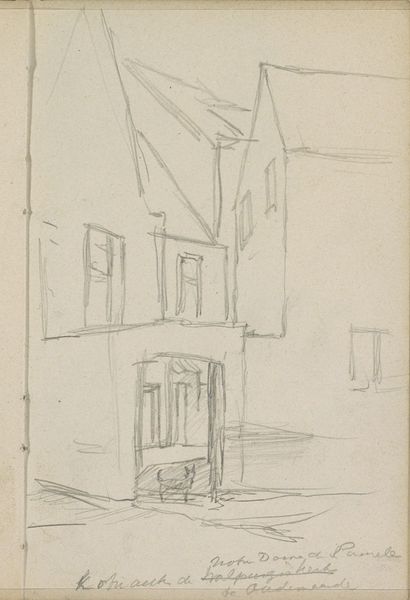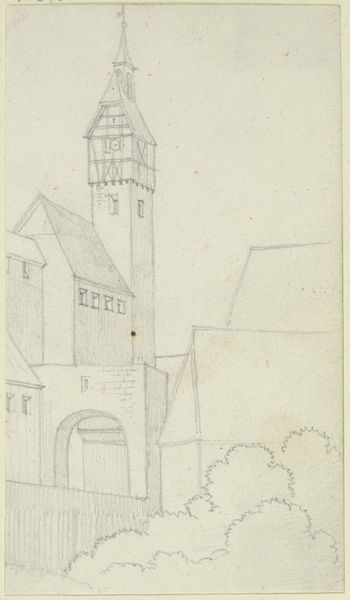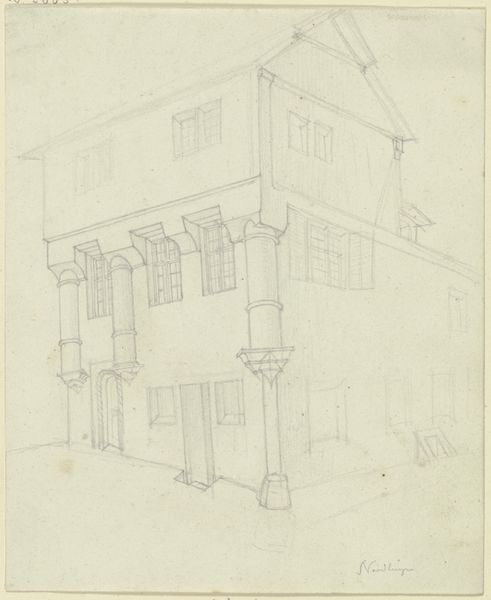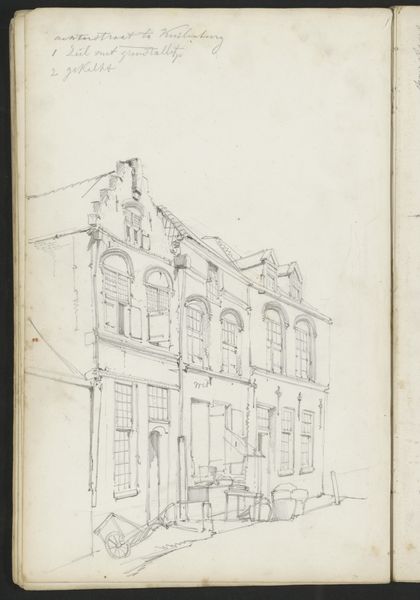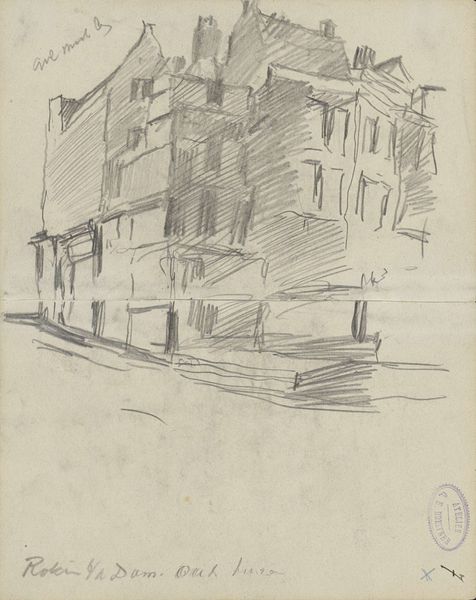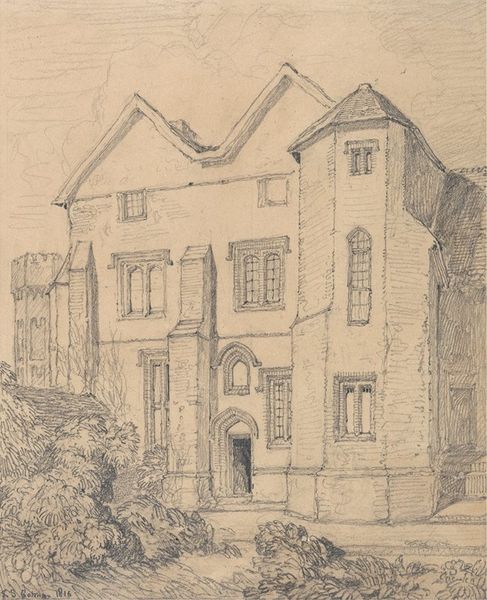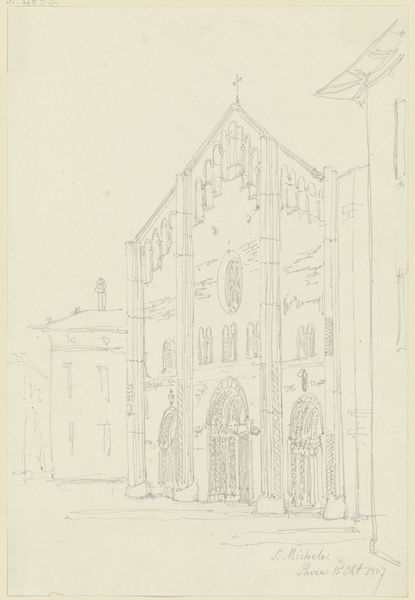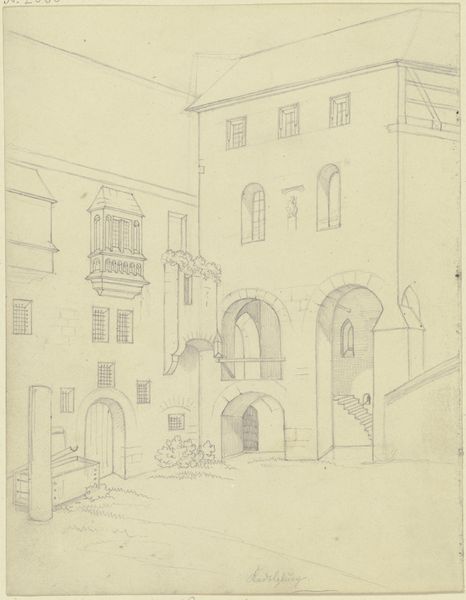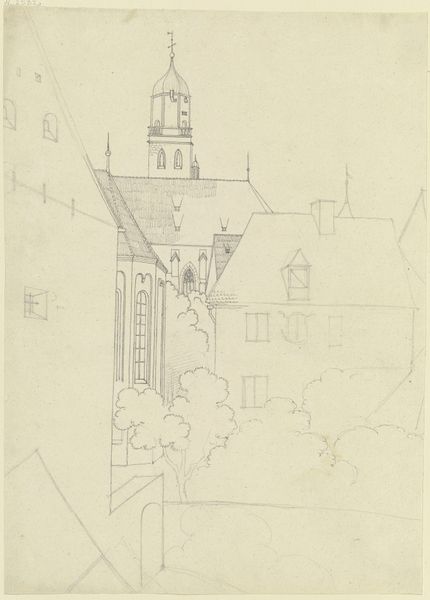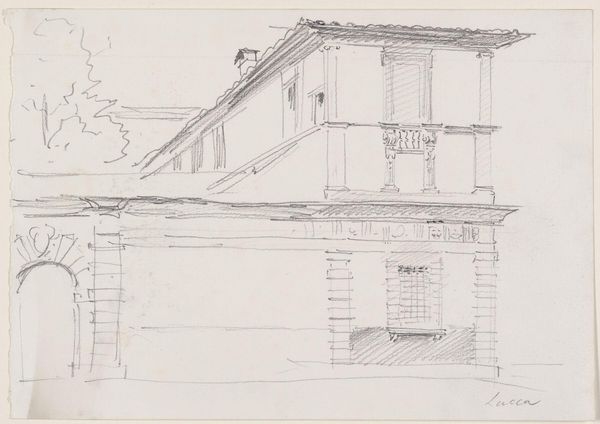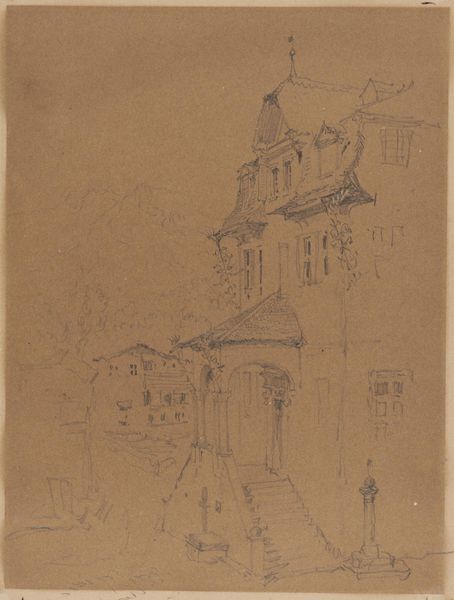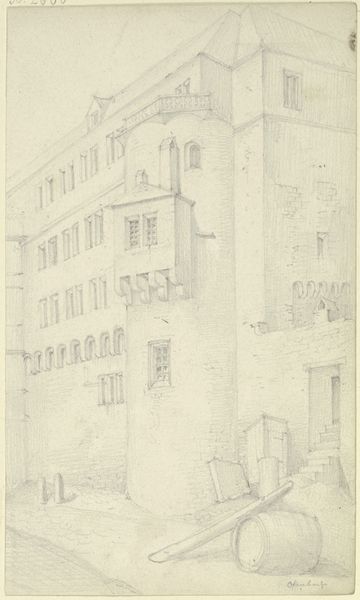
drawing, pencil, architecture
#
architectural sketch
#
drawing
#
quirky sketch
#
sketch book
#
personal sketchbook
#
idea generation sketch
#
sketchwork
#
pencil
#
expressionism
#
architectural drawing
#
architecture drawing
#
cityscape
#
storyboard and sketchbook work
#
architecture
#
initial sketch
Copyright: Public Domain: Artvee
Curator: Today we are looking at "Häuser in Krumau," or "Houses in Krumau," a pencil drawing by Egon Schiele, created in 1918. Editor: It feels raw, almost incomplete. The lines are so fragile, but there is a fascinating geometry to it. What grabs my attention are the sharp angles in contrast to the building’s overall decaying atmosphere. Curator: Schiele’s rendering of Krumau is particularly poignant when we consider his personal history. The town, now in the Czech Republic, was his mother’s birthplace, and he spent formative summers there. His eventual exile from the region, viewed as undesirable by the town's residents, speaks to the fraught relationship between artists and their communities. Editor: Exile certainly informed his style. There’s a palpable anxiety in the deliberate sketchiness, as if he is attempting to capture something fleeting before it vanishes. The way he distorts perspective serves to amplify this feeling; nothing is quite stable. Even the pencil strokes themselves, raw and exposed, lend the piece a stark emotional intensity. Curator: Indeed, it’s tempting to view this drawing as more than just an architectural study. Schiele used Krumau repeatedly as a motif to probe ideas of home and belonging during periods of intense upheaval in Austria and throughout Europe. The architecture almost feels like a stand-in for something more personal, and even symbolic. Editor: Absolutely. The almost diagrammatic way the buildings are depicted strips away any romanticism. He seems more interested in the underlying structure and its vulnerability. Look how those receding lines and skeletal forms create a subtle tension and sense of impending disintegration, it speaks of decay. Curator: This resonates when contextualizing it within his body of work and the tumultuous close of World War I. It mirrors the socio-political landscape of the time, that constant teetering between hope and devastation. It provides another compelling layer to what appears as an urban scene. Editor: Thank you, I now read so much more in what initially came across as a simple drawing! Curator: Indeed. Schiele’s drawings may appear sparse, but they contain remarkable layers of meaning regarding personal and political anxieties.
Comments
No comments
Be the first to comment and join the conversation on the ultimate creative platform.
